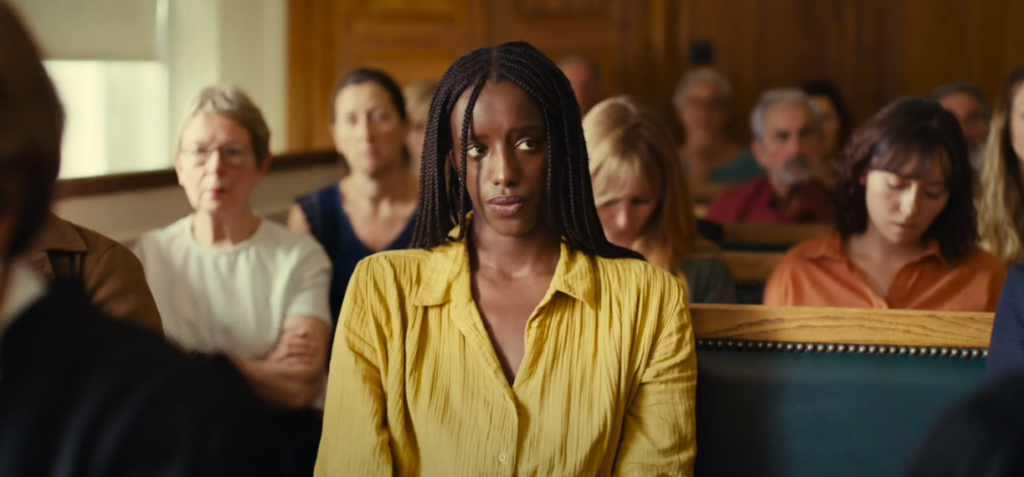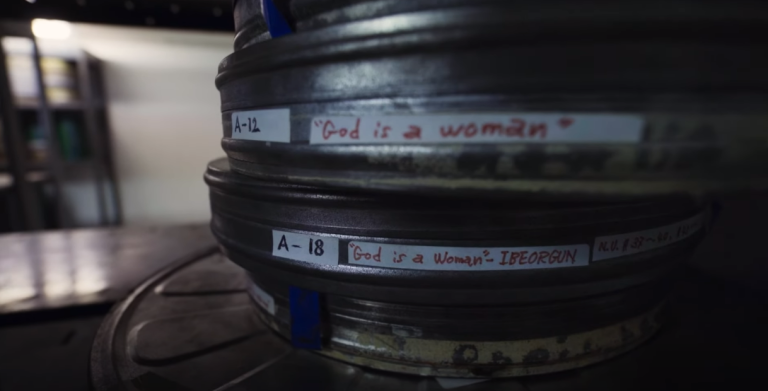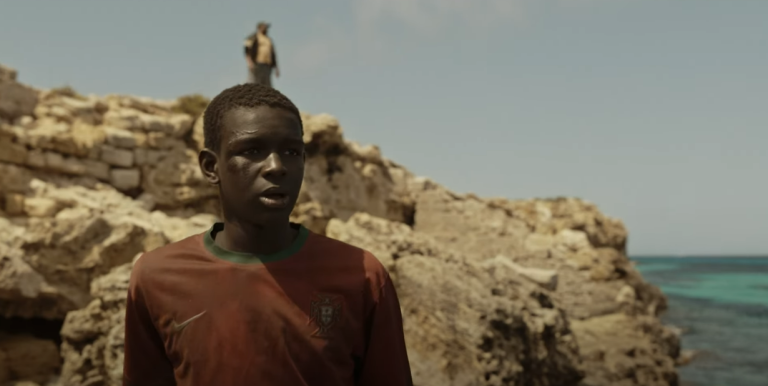
In 2016, Alice Diop, a renowned documentary filmmaker, found herself deeply engrossed in the trial of Fabienne Kabou, a French-Senegalese woman accused of a disturbing crime: abandoning her infant daughter to drown on a beach. Despite the unsettling nature of Kabou’s testimony, which offered little insight into her actions beyond cryptic statements like “It was simpler that way,” Diop, herself of Senegalese descent, felt drawn to the case, especially as she was on the brink of motherhood herself.
Kabou’s story resonated with Diop on a personal level, prompting her to explore themes of motherhood, cultural identity, and marginalization. This emotional connection inspired Diop to step into the realm of narrative filmmaking for the first time with “Saint Omer,” a project that delves into the intricate emotional landscapes surrounding the trial.

In “Saint Omer,” Diop eschews the temptation to provide easy answers or moral judgments. Instead, she allows the film to function as a vessel for probing the depths of human emotion and empathy. Through characters like Rama, a novelist and professor who becomes entranced by the trial, and Laurence, the accused woman, Diop captures the swirling complexities of human behavior and societal dynamics.
What sets “Saint Omer” apart is its refusal to neatly resolve Kabou’s story. Instead, Diop invites viewers to confront their own emotional truths and grapple with the ambiguity of real-life tragedies. For Diop, the film serves as a mirror for her own process of self-interrogation and catharsis, akin to accelerated psychotherapy.

Rama, the protagonist of “Saint Omer,” serves as a window into the emotional turmoil of the trial. As she delves deeper into Laurence’s story, Rama’s own struggles with motherhood, memories of her own upbringing, and feelings of otherness come to the forefront. Through Rama’s introspective journey, Diop explores themes of identity, belonging, and societal prejudices, particularly regarding immigrants and marginalized communities.
Drawing from actual court transcripts, “Saint Omer” blurs the lines between true crime and personal introspection. Cinematographer Claire Mathon’s visual language oscillates between clarity and impressionism, capturing both the stark reality of the courtroom and the emotional turmoil consuming Rama. The film’s exploration of silence as a potent force for communication adds another layer of depth, inviting viewers to listen not just to spoken words but also to the unspoken truths that resonate throughout the narrative.

In “Saint Omer,” Diop consciously subverts the conventions of true crime narratives, offering a broader commentary on contemporary French society and the immigrant experience. By delving into the intricate web of influences that shape individuals and communities, the film becomes a profound reflection on the complexities of human nature and the interplay between personal agency and societal dynamics.
Fabienne Kabou’s academic background, particularly her studies in philosophy, adds complexity to her portrayal in the film. The incredulity of the judge and lawyers towards Kabou’s intellectual pursuits serves as a poignant commentary on the prejudices and stereotypes faced by immigrants. Their refusal to accept Kabou’s interests underscores a broader societal tendency to pigeonhole individuals based on their origins.

Overall, “Saint Omer” stands as a testament to the power of listening and empathy. By embracing silence as a means of communication and refusing to provide easy answers, the film challenges viewers to confront their own preconceptions about identity, intellect, and belonging. Through its nuanced exploration of human experience, “Saint Omer” invites audiences to engage with the complexities of the world and the individuals within it.
| Aspect | Summary |
|---|---|
| Main Plot | “Saint Omer” revolves around the trial of Fabienne Kabou, a French-Senegalese woman accused of leaving her infant daughter to drown on a beach. The film explores the complexities of human behavior, particularly through the lens of Alice Diop’s personal connection to the case and her reflections on motherhood and cultural identity. |
| Character Dynamics | The narrative follows Rama, a successful novelist and professor, as she becomes immersed in the trial and forms an empathetic connection with Laurence, the accused. Through their interactions, the film delves into themes of empathy, societal divides, and personal introspection. |
| Cinematography | Cinematographer Claire Mathon employs a blend of clear, stark visuals and impressionistic imagery to capture the emotional nuances of the courtroom and Rama’s internal struggles. The film’s visual language reflects the tension between reality and introspection, highlighting the complexity of human experience. |
| Themes | “Saint Omer” addresses themes of identity, belonging, and societal prejudices, particularly regarding immigrants and marginalized communities. It challenges viewers to confront their own preconceptions and biases, while also exploring the power of silence and empathy in understanding the intricacies of human behavior. |
| Narrative Approach | Unlike traditional true crime narratives, “Saint Omer” refuses to offer easy answers or moral judgments. Instead, it invites viewers to engage with the complexities of the case and the emotional journey of its characters. Through its narrative ambiguity, the film encourages introspection and reflection, mirroring Alice Diop’s own process of self-interrogation and catharsis. |
| Intellectual Curiosity | The film highlights the dismissal of Fabienne Kabou’s academic pursuits by the courtroom, reflecting broader societal prejudices against immigrants and their capacity for intellectual exploration. Alice Diop’s exploration of this theme underscores the importance of challenging stereotypes and recognizing the complexity of individual experiences. |
| Power of Silence | Diop utilizes silence as a powerful tool for communication, inviting viewers to listen not just to spoken words but also to the unspoken truths that resonate throughout the film. Through moments of quiet contemplation, “Saint Omer” encourages a deeper understanding of human emotion and the complexities of identity and belonging. |
| Overall Message | “Saint Omer” serves as a profound exploration of human experience and societal dynamics, challenging viewers to confront their own biases and assumptions. By embracing ambiguity and empathy, the film encourages a deeper engagement with the complexities of the world and the individuals within it. |






